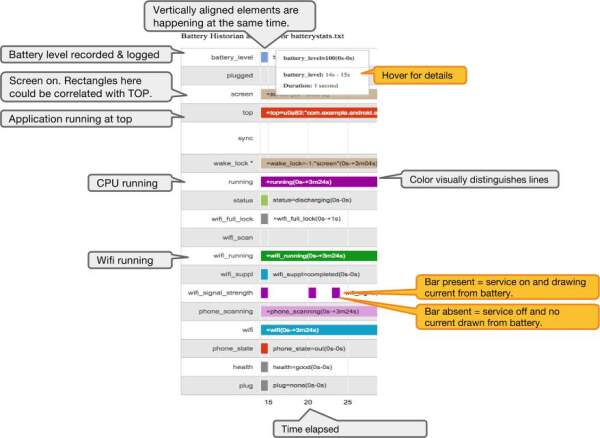-
Free SSL Certificates using ACM (AWS Certificate Manager)
2016 may be the year of free SSL, and AWS ACM (AWS Certificate Manager) is a great offering for Cloudfront & ELB users (most web apps).
Not only is it free, but it’s also the simplest certificate management platform
- request a new certificate in minutes
- no server config needed
- no certificate , chain or private key management
- automatic certificate rotation
Here’s how to create a certificate and then install it onto your cloudfront distribution.
-
Creating a Varnish Load Balancer for Opsworks
Varnish is an amazing platform – it can easily help you handle 100x traffic and is easy to add to your existing frontend or API layer with little to no change to your app.
Here we’ll go over some neat tricks leveraging chef, the AWS Opsworks API and the opsworks
configurelifecycle event to create a lighting fast load balancer & reverse proxy that automatically updates itself.Setup
-
Create a new
varnishlayer that installs thevarnishandjqpackages
-
-
Using the AWS EC2 Container Registry with EC2 Container Service
AWS announced recently that it’s EC2 Container Registry (ECR) is now available. ECR simplifies hosting private images. Previously, you had to manually push your docker.io credentials to each EC2 instance – likely a deliberate pain-point encouraging you to use ECR. With ECR, EC2 container hosts can easily fetch private images using IAM authentication.
Here are some of the gotchyas and stumbling blocks to help you get your repository up quickly and painlessly.
-
Securing Your Network Using Auto-Updating Security Groups
We all know that no ports should be open to the internet for development purposes, but for convenience it’s common to find a security group with port 22 (SSH) open to
0.0.0.0/0. Even narrower ingress rules can create backdoors.Here we’ll show you how to create an auto-updating security group that adds your active WAN IP address when you connect. This way, only your active IP is authorized.
Create the “development” security group with no ingress
aws ec2 create-security-group --group-name=development --group-description="ssh access for my dev machine"Create a limited role that can only update this security group
Since you may want to embed this script on your router or elsewhere, it’s important to generate a restricted access key that can only do one thing Create a user and add this policy
-
Delegating Admin Credentials using IAM Roles and Cloudwatch Alerts
It’s hard to strike the right balance with admin rights–either the rights are too strict and people can’t get work done or they’re too lenient and you have security issues.
As a compromise, AWS provides the
AssumeRolefeature which lets admins temporarily escalate their role to perform a task.It’s important when setting this up that you alert the team when it’s used. Here we’ll talk about how to set up the roles, give teams access to the roles and create an alert system when the roles are assumed.
-
Using AWS Lambda for Web Video Transcoding
Often your creative team will produce master videos in 4k or 1080p, but you need to downcode these videos into 720p/1080p for web broadcasting. Here we automate transcoding of masters into web-friendly formats like 720p h264 mp4 & webm.
AWS Elastic Transcoder is a cloud video transcoding service. At it’s simplest it transcodes video files from one bitrate, framerate, codec, container, etc–into another. By default you trigger new jobs either manually in the aws console or via the rest API. And naturally all inputs & outputs are saved in S3.
-
Wordpress Cron on Opsworks
By default Wordpress uses it’s own pseudo-cron which triggers with every request. Obviously this is wasteful since (a) the queue needs to be inspected with every GET and (b) jobs like publishing articles will interfere with serving content.
Some suggest calling the
wp-cron.phpGET request with curl in a cron like this* * * * * curl http://www.mysite.com/wp-cron.phpbut that’s sub-optimal since it needlessly ties up a worker during the cron execution.
-
HTTP Redirects with Cloudfront & S3
Redirects can account for a significant share of direct traffic so taking a few minutes to optimize them is worthwhile.
Using Cloudfront & S3 for redirects will improve responsiveness, reduce server load and improve management (since they are managed via
aws-clior the console).Let’s say you have a typical
.htaccessredirect like this.RewriteEngine On ### re-direct to www RewriteCond %{HTTP_HOST} !^www\. [NC] RewriteRule ^(.*)$ http://www.%{HTTP_HOST}%{REQUEST_URI} [R=301,L]Or worse, it could look like this in your
index.php -
Better Battery Statistics with Battery Historian
Continuing the relentless quest to keep my phone speedy, I stumbled upon a developer tool that is useful to anyone needing to troubleshoot a slow, short-living or overheating phone – Battery Historian

Battery Historian shows you a much more detailed and informative battery stats chart, highlighting the individual apps and sync services which are keeping your phone awake/busy in the background. It also shows network, wifi status, gps and more.
-
Debugging Android Performance & Battery Issues--Like a Developer
I have a frustrating relationship with my phone’s performance. I can cleanup my phone for a few days, but it tends to revert to being sluggish within no time. I’ve had dozens of devices and they all suffer from this.
There’s a lot of voodoo about Android Performance and Battery life–task managers, factory resets, etc.
Here’s a more developer-oriented process using adb .
Using ADB to identify process hogs
By connecting your device to the Android SDK, you can use ADB to identify process hogs. If you can, just remove the app. Otherwise, delete it’s data (see
pm clearbelow)

Tony Metzidis
Software Developer